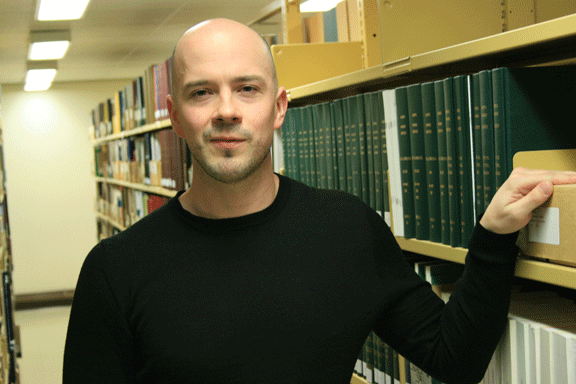 Bedbugs have enjoyed resurgence around the world due to the phasing out of pesticides like DDT, and the bugs' evolved resistance to chemicals like pyrethroids that have kept them in check, says James Armstrong, a U of S master's student who is studying the pests. Consummate travellers, the bugs move around the world the same way as everyone else, via trains, planes and automobiles.
Bedbugs have enjoyed resurgence around the world due to the phasing out of pesticides like DDT, and the bugs' evolved resistance to chemicals like pyrethroids that have kept them in check, says James Armstrong, a U of S master's student who is studying the pests. Consummate travellers, the bugs move around the world the same way as everyone else, via trains, planes and automobiles.
And while there is a social stigma that bedbugs are associated with poor hygiene or housekeeping, this is not the case, said Armstrong.
"Cleanliness has nothing to do with it. Bedbugs don't care if you have a clean house or a dirty house. That's irrelevant to them. You could have a very clean house and still have bedbugs."
While he said it is a little early to call himself an expert, Armstrong is more knowledgeable than most about the tiny bloodsuckers. His graduate project, under the supervision of parasitologist Neil Chilton, is to sequence the mitochondrial DNA of the bedbug, batbug and swallowbug. This knowledge can be used to help determine where an infestation is coming from, or if it is coming from several sources.
Armstrong also sits as an advisor on a city task force on bedbugs, where he contributes his specialized knowledge on reproduction, habits, effective baits and attractants. While he finds the bugs fascinating, he admits to a certain caution while he tagged along with an exterminator friend recently to infested houses in Saskatoon and Swift Current to collect specimens.
"I was really concerned when I started going to collect samples for my study, about bringing them (bedbugs) home, because I'd have to go into houses with infestations," he said.
Fortunately, thanks to special boots and gloves—and never kneeling down on the floor—the only bugs came back in bottles, safely euthanized in alcohol.
Armstrong explained that while bedbugs are not exactly friendly to humans, they're even worse to each other.
"They've got a really interesting method of reproduction. It's called traumatic insemination, and it's exactly as horrific as it sounds," he said. Basically, the male bedbug stabs the female in the chest to inseminate her sometimes killing her in the process.
"It's thought to have evolved due to female choosiness, so males evolved this antagonistic behavior. It's disgusting, but interesting."
While bedbugs may have received a bit more attention as of late, there's no reason for alarm, said Andrea Smida, biosafety manager with the U of S Facilities Management Division (FMD).
"We've always had them in the city, but they come out of the woodwork from time to time," she said. On campus, a bedbug that recently showed up on a chair in the Natural Sciences Library was the first case in about five years. One critter that showed up in the Murray Library turned out to be a batbug, a close relative of bedbugs that usually does not feed on humans.
Smida explained that any report of a bedbug is first assessed and a response, like bringing in a professional exterminator, is rolled out immediately to prevent the pests from getting established.
"It's a lot of work to get rid of them, that's the problem," Smida said. "You have to make sure the area is prepped properly. If it isn't, the treatment won't be successful."
Good night, sleep tight ...
First, the good news: they can’t jump and they can’t fly. The bad news: they can climb and cling very well indeed, which is why hitchhiking bedbugs have shown up in some very unlikely places.